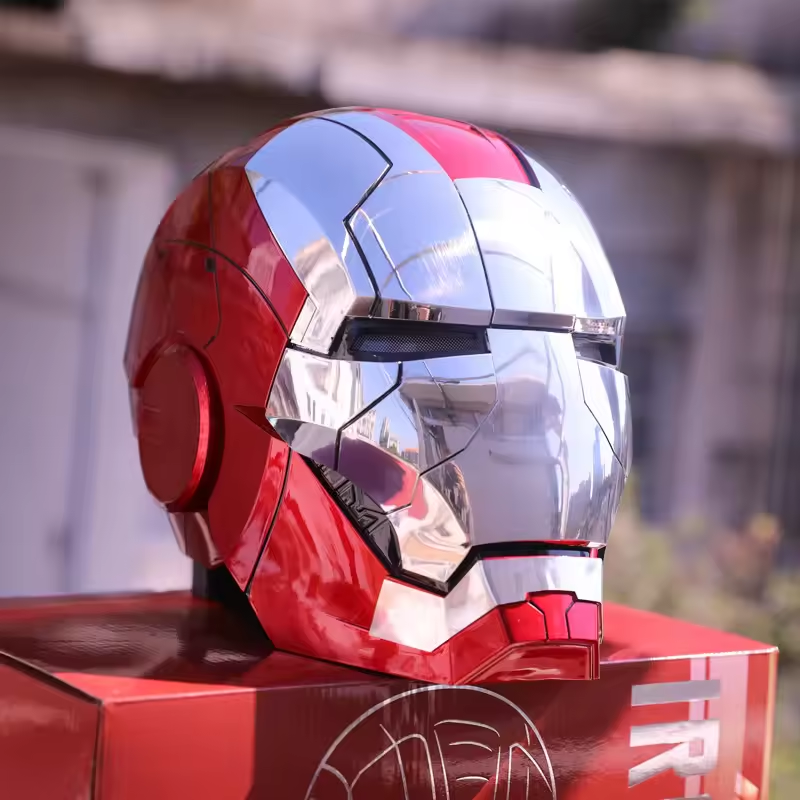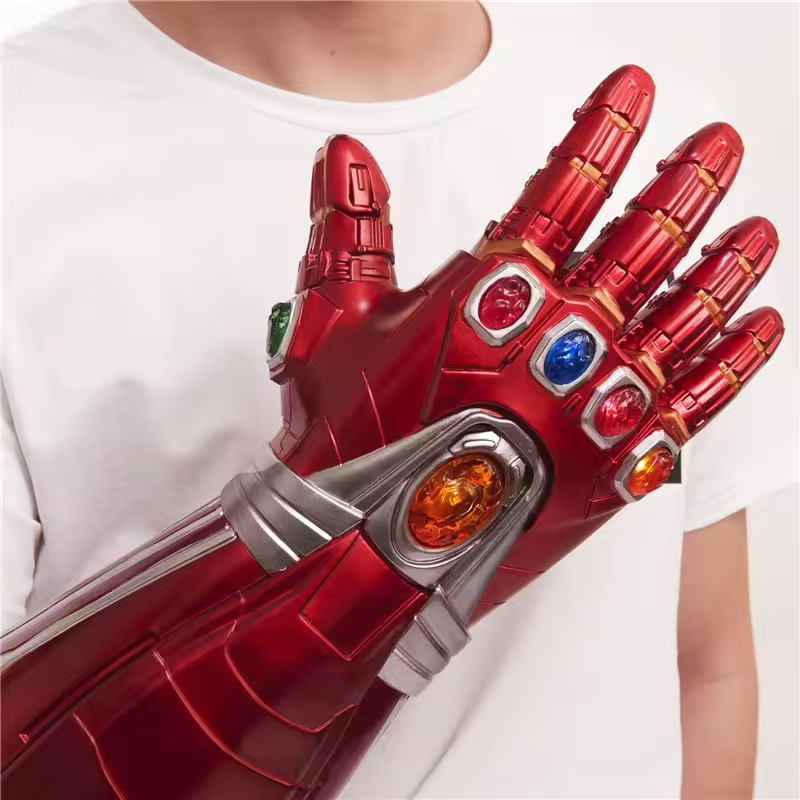Breakthroughs in Wearable Technology
Wearable technology has made leaps and bounds in recent years. From smartwatches to fitness trackers, it’s challenging the way we interact with our devices. Yet, a new frontier is upon us with the advent of ‘Iron Man skin’. This innovative tech mimics the legendary superhero’s suit. It’s more than just a nod to pop culture. It embodies a significant advancement in wearable tech.

Innovations in this field include flexible electronics that can adhere to skin. These devices can monitor health metrics continuously. Think of sweat sensors that track hydration levels or patches that read vital signs. These breakthroughs blend seamlessly with our daily lives, making tech truly wearable. Imagine charging your devices just by walking or having clothes that change temperature with the weather. These are just glimpses of what is rapidly becoming possible.
The Iron Man suit is pushing the envelope further. It points to a future where wearables are not just on us, but part of us. Enhanced with AI and material sciences, this skin can potentially provide superhuman abilities. The possibility of enhancing our senses, strength, or endurance now seems within reach. At this rate, wearable technology won’t just change our gadgets. It will revolutionize how we live, work, and play.
The Inspiration Behind Iron Man Skin
The idea of Iron Man suit sparks the imagination and inspires innovation. Its origin stems from the iconic Iron Man of the Marvel universe. The character, Tony Stark, uses his genius to create a suit that bestows him with extraordinary abilities. This concept has captivated audiences and tech enthusiasts alike, setting a benchmark for what cutting-edge technology could look like.
Iron Man’s suit is not just armor. It is a sophisticated hub of technology that includes propulsion, weapons, and life-support systems. The suit’s integration with Stark’s body and its response to his commands through AI represent the pinnacle of human-machine symbiosis. This synergy inspires scientists and engineers to conceive real-world applications.
In creating wearable technologies that resemble ‘Iron Man skin’, researchers seek to harness similar powers. They aim to equip humans with enhanced physical capabilities, improved health monitoring, and even life-saving interventions. The aspiration to meld human dexterity with technological prowess drives this vision. It’s a quest for a seamless interface between man and machine that betters our lives.
The Iron Man’s suit is more than a cool concept. It’s a beacon for what technology could achieve. It encourages pushing boundaries in material science, artificial intelligence, and healthcare. People long for empowerment and this inspiration serves as a launchpad for the innovations shaping our future in wearable tech.
Applications of Iron Man Skin in Healthcare
‘Iron Man skin’ is not just a sci-fi dream. In healthcare, its applications are groundbreaking. Imagine a future where doctors monitor patients with a simple touch. Sensors in the skin could track health status in real time. This could change how we manage chronic diseases.
Monitoring Vital Signs
This wearable tech could constantly monitor heart rate and blood pressure. No need for bulky machines or constant hospital visits. Patients could get on with their lives, with peace of mind about their health.
Advanced Wound Care
Wound healing could take a leap forward. Iron Man’s suit might dispense medicine or track healing. Burn victims could benefit from such advancements significantly. Healing times could reduce, and outcomes could improve.
Enhancing Physical Abilities
For the physically impaired, Iron Man’s suit could mean new possibilities. It could support movement or amplify strength. This could help them do more on their own, boosting independence and quality of life.
Emergency Response
During emergencies, real-time data from Iron Man’s suit could save lives. It could alert paramedics to critical changes in a patient’s condition. Faster response times could make all the difference.
Overall, the ‘Iron Man skin’ could revolutionize patient care. It points to a future where technology not only assists but integrates with our health management in profound ways.
Advancements in Material Science for Wearable Tech
The ‘Iron Man skin’ is a marvel of material science. The development of this tech centers on inventing new materials. These materials must be light, strong, and flexible. Scientists are creating substances that can stretch but return to their original shape. These advancements are crucial for wearable tech to meld with our natural movements.
Imagine electronics that bend with our joints without breaking. This is now possible with the latest discoveries in material science. Researchers have developed conductive inks and threads. These can integrate into fabrics without hindering comfort. They have also designed ultra-thin sensors. The sensors adhere to skin and conform to our body’s contours.
Durability is also key. Wearables face exposure to sweat, friction, and varying temperatures. Materials used in ‘Iron Man skin’ need to withstand these elements. Research focuses on making these materials water-resistant and resilient.
Biocompatibility is another crucial factor. For tech to be safe against our skin, it must not cause irritation or allergic reactions. Scientists test new materials rigorously to ensure they are safe for long-term wear.
Furthermore, energy harvesting is a field gaining traction. Materials that can generate power from body movement or heat are under development. This could lead to self-sustaining wearables, reducing the need for frequent charging.
In essence, advancements in material science are the backbone of Iron Man’s suit. They make the dream of having tech seamlessly integrate with our bodies more achievable. With each breakthrough, we move closer to a world where wearable tech enhances every aspect of our daily lives.
The Role of AI in Iron Man Skin Development
Artificial intelligence (AI) plays a pivotal role in the creation of ‘Iron Man skin’. AI systems are responsible for several vital functions in this burgeoning field of wearable tech. Here’s how AI is helping to shape the future of ‘Iron Man skin’.
Designing Flexible Electronics
AI aids in designing electronics that conform to human skin. It runs simulations to predict how materials behave when bent or stretched. This ensures that the electronics maintain functionality under different conditions. By doing so, AI is instrumental in creating wearables that are not only efficient but also durable and comfortable for long-term use.
Health Monitoring Algorithms
In health care applications, AI develops algorithms for monitoring vital signs. These algorithms analyze data from sensors in real time. They detect patterns that might signify health issues. Such sophisticated monitoring enables timely medical interventions, potentially saving lives.
Enhancing User Experience
AI optimizes the user experience by learning individual preferences and behaviours. It adjusts the ‘Iron Man skin’ functions accordingly. For instance, if the tech senses stress through elevated heart rates, it might suggest relaxation techniques or adjust the environment to help the user relax.
Energy Efficiency
Efficient energy use is also a concern AI tackles. It optimizes the power consumption of wearable devices. This can lead to extended battery life and reduced need for charging, making the tech more practical for everyday use.
Integration with Other Technologies
AI ensures seamless integration of ‘Iron Man skin’ with other devices. It enables communication between wearables and smartphones, computers, or other smart devices. By doing so, AI expands the utility and reach of wearable tech beyond stand-alone applications.
In conclusion, AI is not just an add-on feature; it’s a core component driving the development of ‘Iron Man skin’. It’s opening new horizons in wearable technology, making it smarter, more intuitive, and more intertwined with our daily lives. The marriage between AI and material science is setting the stage for wearable tech that empowers human abilities like never before.
Challenges and Limitations of Iron Man Skin
While ‘Iron Man skin’ represents a breakthrough in wearable tech, it faces challenges. Let’s examine these hurdles closely.
Material Durability and Flexibility
Even with advancements, finding materials that balance strength, flexibility, and durability is tough. They must endure daily wear-and-tear without losing functionality or comfort.
Power Supply and Energy Consumption
Sustainable power sources for these wearables remain a concern. Devices need energy-efficient designs for prolonged use without frequent recharging.
Data Privacy and Security
Collecting health data poses privacy risks. Ensuring this sensitive information remains secure is a significant challenge.
Cost and Accessibility
High-tech materials and AI integration lead to cost concerns. These innovations must be affordable for widespread use.
Health and Safety Regulations
Tech wearable like ‘Iron Man skin’ must pass strict health safety standards. Compliance is critical before they can enter the market.
User Adaptability and Comfort
Users need to find the tech easy to use and comfortable to wear. It’s essential for tech to adapt to different body types and lifestyles.
Despite these challenges, progress toward overcoming them is ongoing. With time, ‘Iron Man skin’ could move from concept to daily reality.
Iron Man Skin and Its Impact on Consumer Electronics
The concept of ‘Iron Man skin’ is set to transform consumer electronics. Its impact hinges on how we use and interact with our gadgets. Here are some ways ‘Iron Man skin’ could influence the industry:
Wearable Smart Devices
We could see an evolution from bulky smartwatches and bands to sleek, skin-like electronics. These gadgets will offer more comfort and could provide real-time data effortlessly. The idea is to move towards less intrusive, more natural-feeling tech.
Enhanced User Interfaces
Touchscreens may become more intuitive with ‘Iron Man skin’. Users could control devices with simple gestures or movements. This could result in a more seamless interaction between users and their tech.
Personalization and Adaptation
Electronics could become more adaptable to individual needs. AI could tailor functions based on our habits and preferences. Personalized tech is not only more enjoyable; it also boosts efficiency.
Revolutionary Communication Tools
Communication could be reimagined with ‘Iron Man skin’. Imagine sending a message by tapping your forearm or talking through a smart patch on your neck. This could redefine the very essence of mobile communication.
Smart Clothing
Everyday apparel could become a platform for consumer electronics. Jackets with built-in screens or shirts that track fitness are potential applications. ‘Iron Man skin’ blurs the line between what we wear and the devices we carry.
Gaming and Virtual Reality
Gaming could ascend to new levels of immersion. Controllers might be replaced by ‘Iron Man skin’ that interprets your movements, deepening the virtual reality experience.
In summary, ‘Iron Man skin’ points to a future where electronics are more personal, immersive, and ingrained in our daily life. Consumer electronics will adapt to our needs like never before, continually enhancing the way we live, work, and play.
Future Prospects of Iron Man Skin in Different Industries
The potential of ‘Iron Man skin’ stretches far beyond healthcare and consumer electronics. Let’s explore its future prospects across various industries.
Manufacturing and Construction
In these sectors, ‘Iron Man skin’ could protect workers. It could monitor safety conditions and reduce the risk of injury. It may also boost productivity by enhancing physical strength.
Military and Defense
Soldiers could gain from armor-like qualities. ‘Iron Man skin’ might improve combat gear, adding new layers of protection and capability.
Sports and Fitness
Athletes might use it to track performance and reduce injury. Coaches could get data to shape training programs. It can also aid in quick recovery from sports-related injuries.
Entertainment and Media
Actors might perform stunts safely with ‘Iron Man skin’. It could also offer new ways for audiences to interact with media, adding a tactile dimension.
Fashion and Design
Designers could integrate tech into clothing, creating interactive apparel. These clothes might change color or patterns and connect to social platforms.
Space Exploration
Astronauts could wear ‘Iron Man suit’ for extra protection in space. It could monitor vital signs or repair itself, vital for long-term missions.
Emergency Services
First responders could arrive at disaster sites better equipped. Their gear, powered by ‘Iron Man skin’, could enhance their abilities to save lives.
Environmental Monitoring
Researchers could use it in the field to track environmental changes. Sensors can detect pollutants or track wildlife without disturbing ecosystems.
In the vast arena of possible applications, ‘Iron Man skin’ is set to revolutionize traditional practices. It promises improved efficiency, safety, and engagement across all these fields. The myriad of opportunities is only limited by our imagination and the pace of technological advancement.




